It’s Batman’s 75 Anniversary, and between his upcoming adventures on the big screen (in the now filming Batman v Superman: Dawn of Justice), small screen (as a young boy in this fall’s Gotham), video game consoles (in Batman: Arkham Knight and LEGO Batman 3: Beyond Gotham), animation (Batman: Assault on Arkham) and multiple ongoing comic books (including his very first weekly, Batman Eternal), it’s going to be a big couple of years for the Dark Knight. But that’s okay, he’s used to it. In fact, his entire history has been full of big moments!
In honor of this year’s milestone anniversary, as well as this week’s upcoming “Batman Day,” join us as we journey through generations, with a look at a few highlights from a truly remarkable life.
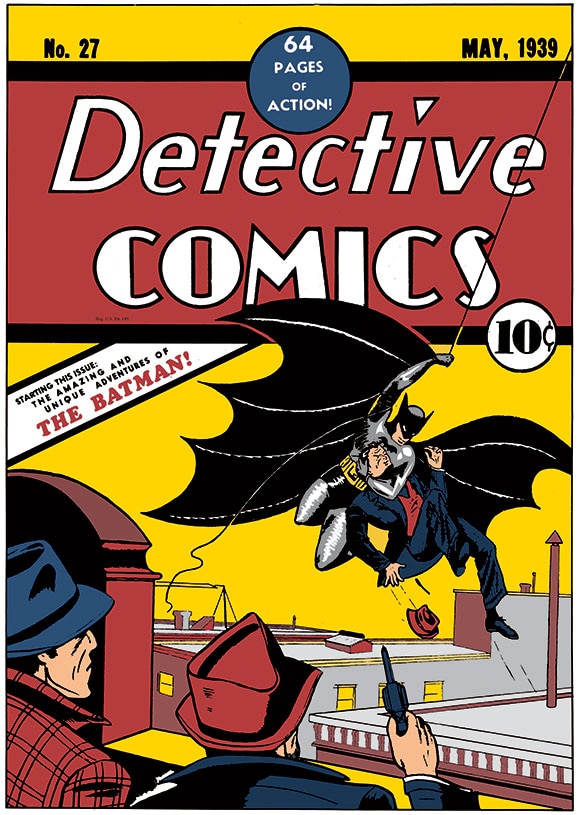
1939
In 1939, National Comics (later to become DC Comics), was looking for a new super hero—a character who could build on the success of Superman. Editor Vin Sullivan turned to what appeared to be an unlikely creative source, gag cartoonist Bob Kane, and asked him to design a new hero. Kane conceived one of the most popular and enduring characters of the twentieth century—The Batman. The first Batman story, "The Case of the Chemical Syndicate," was written by Bill Finger and drawn by Kane. It was published in Detective Comics #27, which hit newsstands on March 30, 1939 (cover date: May 1939).
In his first story, Batman was introduced as bored socialite Bruce Wayne. Donning his iconic costume, he became a ruthless crime-fighter who dispatched thugs with grim satisfaction. “A fitting end for his kind,” Batman announced, after knocking a criminal into a vat of acid.
Batman utilized his Utility Belt for the first time to remove a glass pellet filled with deadly gas in Detective Comics #29 (July 1939). The first boomerang-like Batarang and the first bat-themed vehicle, the Batplane, made their debuts in Detective Comics #31 (September 1939).
Batman’s tragic origin story, in which a mugger guns down Bruce Wayne’s parents as the family walks home from a movie, was introduced six months after his debut, in Detective Comics #33 (November 1939).
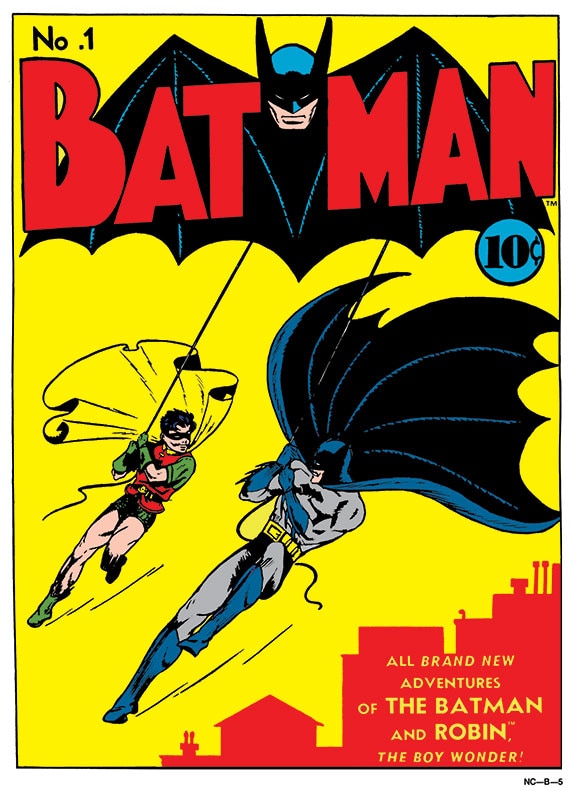
1940s
The Dynamic Duo was born in Detective Comics #38 (April 1940) with the introduction of Batman’s trusty sidekick, Robin the Boy Wonder. Dick Grayson was a circus performer who was orphaned when a gangster murdered his parents. After Batman teamed up with Robin, the tone of the stories changed. No longer a grim avenger who talked to himself, Batman evolved into a lighthearted father-figure trading wisecracks with his young partner.
Originally, Bob Kane agreed to try out Robin for just one issue, as DC’s publisher Jack Liebowitz was against the idea of having a youngster fighting gangsters. After sales doubled on the first issue to feature the Boy Wonder, Liebowitz sheepishly agreed to keep Robin in future stories.
Batman earned his own self-titled comic book in 1940, while continuing to be featured in Detective Comics. Batman #1 (Spring 1940) was notable not only for introducing two of his most formidable antagonists, the Joker and Catwoman (here referred to as “The Cat”), but for a story in which Batman used a machine gun to shoot monsters. That story prompted editor Whitney Ellsworth to decree that Batman would no longer kill or use a gun.
Many other key pieces of Batman’s world were introduced in the 1940s. Batman’s home of Gotham City was first named in Detective Comics #48 in 1940, and the Batcave was introduced in Batman #12 in 1942. Batman's first car was an ordinary red sedan, but in Batman #5 (Spring 1941) the new Batmobile roared into action sporting its own bat-headed battering ram.
Batman and Robin declared that they didn’t need a butler, but when Alfred Beagle (later changed to Pennyworth) discovered their secret identities and thwarted a gang of international crooks in 1943, he became one of their most loyal allies.
During the 1940s, the tone of the Batman stories grew more fanciful. The Joker became less of a sinister killer and more of a dangerous prankster. Batman and Robin journeyed to ancient Rome in their first time-travel adventure in 1944. Batman even found an enduring love interest when photo-journalist Vicki Vale was introduced in 1948.
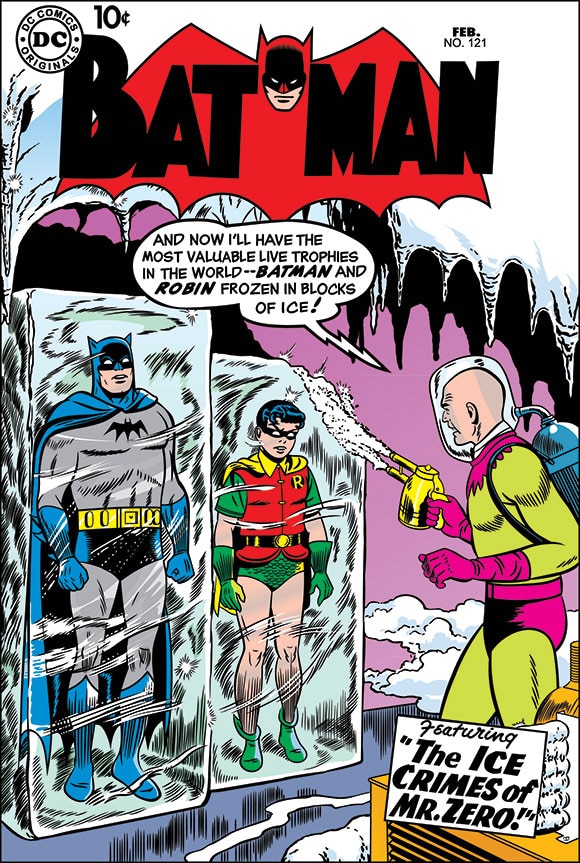
1950s
Batman stories became somewhat bizarre during the 1950s. Batman became an unlikely science-fiction star, regularly battling space-aliens and robots. In one unusual transformation, he even became “Zebra Batman,” a radioactive, black-and-white-striped menace to Gotham City. An entire Bat-Family of characters was added to the comics, including Batwoman, Bat-Girl, a magical imp named Bat-Mite, and even Ace the Bat-Hound, a crime-fighting dog that wore a mask.
A popular 1954 book called Seduction of the Innocent linked comic books and juvenile delinquency, leading to calls for censorship. DC’s comics were far tamer than the gory horror comics from other publishers, but there was a clean-up campaign at DC for some of the characters. Catwoman, whose dress had been slit up to her thigh, stopped appearing in Batman stories in 1954 and didn’t return in a new story until 1966.
Batman and Superman had been honorary members of the Justice Society of America in the 1940s, but it wasn’t until the 1952 story "The Mightiest Team in the World" that they joined together in an unofficial partnership to fight crime. In that first story, Batman and Superman fought for the attention of Lois Lane—a competition won by Robin, to the surprise of both heroes.
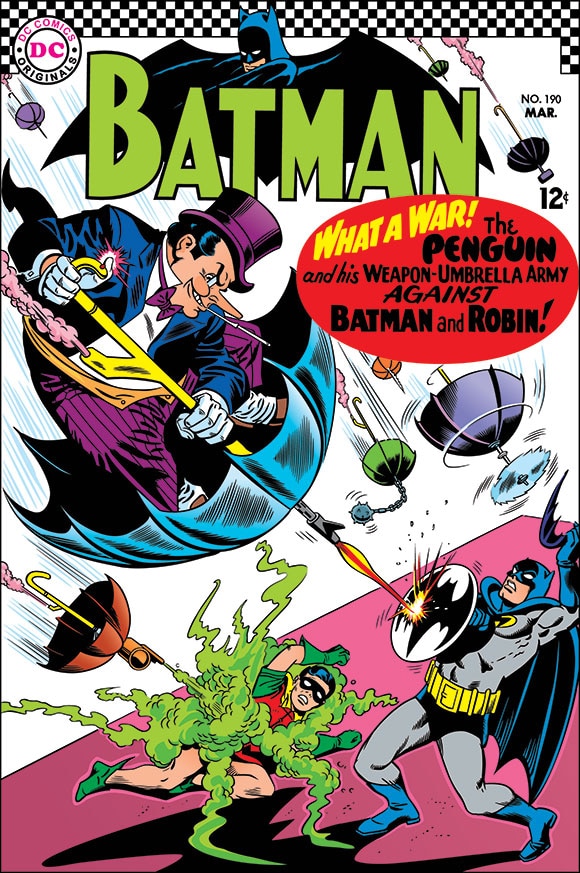
1960s
To defeat the alien starfish Starro the Conquerer, Batman joined the Justice League of America in The Brave and the Bold #28 (February 1960), fighting alongside team members Wonder Woman, Flash, Superman, Aquaman, Martian Manhunter, and Green Lantern.
By 1964, sales of Batman and Detective Comics were sinking, and they were in danger of being canceled. To stem the slide in sales, the books were assigned to editor Julie Schwartz, who ushered in a “New Look” for Batman. Changes included a yellow oval around the bat on the hero’s chest, a new Batmobile, and a hotline to police headquarters. Batwoman, Ace, and Bat-Mite were retired, and the focus turned to detective stories. Faithful butler Alfred was killed off, and Dick Grayson's Aunt Harriet came to live with Bruce and Dick.
The campy, colorful Batman television series starring Adam West and Burt Ward made its debut on January 12, 1966. A huge ratings success that aired with two new episodes every week, the show spawned an unprecedented number of tie-in toys and merchandise, and it also inspired a new generation of Batman fans. Sales of the Batman comics soared.
Created at the request of the Batman TV show producers, a new Batgirl made her debut in Detective Comics #359 in 1967. She was revealed as the teenage daughter of Gotham City’s police commissioner James Gordon, who never knew that Barbara snuck out every night to fight crime. Luckily, she always made it home in time to pursue her studies in forensic psychology.
After the Batman TV series was canceled in 1968, sales of the comics fell again. In Batman #217 in 1969, Dick Grayson left for college, and Bruce Wayne closed Wayne Manor in favor of a penthouse apartment, the first step in a move to reestablish a “back-to-basics” atmosphere for the character.
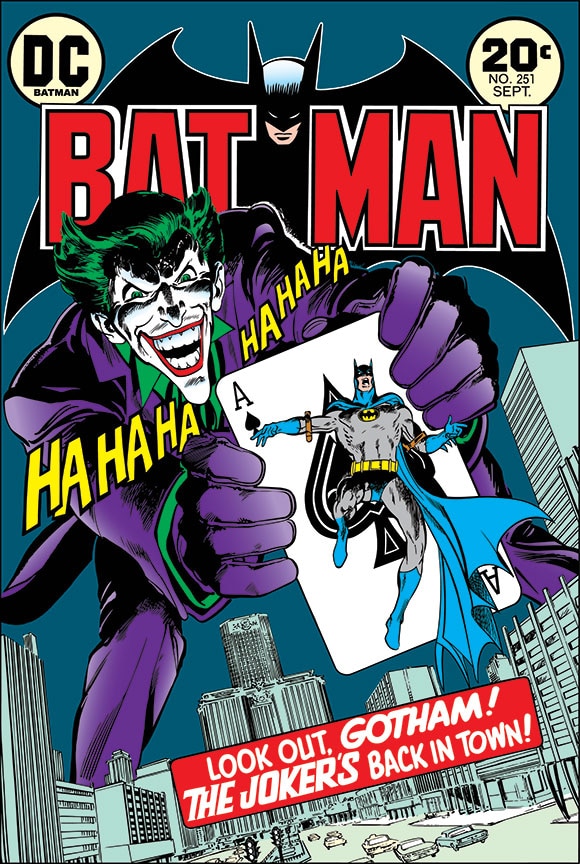
1970s
In the early 1970s, the Joker and the rest of the Rogues Gallery were out of the picture, at least for a while. Batman operated alone and relied on his wits, solving mysteries and fighting street thugs in back alleys. He had returned to his original incarnation: a shadowy figure haunting Gotham by night and striking fear into the hearts of criminals.
1971 saw the arrival of the mysterious and all-knowing villain Ra’s al Ghul in Batman #232, written by Dennis O’Neil and drawn by Neal Adams. Over the next years, Ra’s al Ghul would develop into a world-class threat.
Batman returned to television when The New Adventures of Batman animated series premiered on February 10, 1971, featuring the voices of Adam West and Burt Ward as the Dynamic Duo. The series continued airing under different names until 1981.
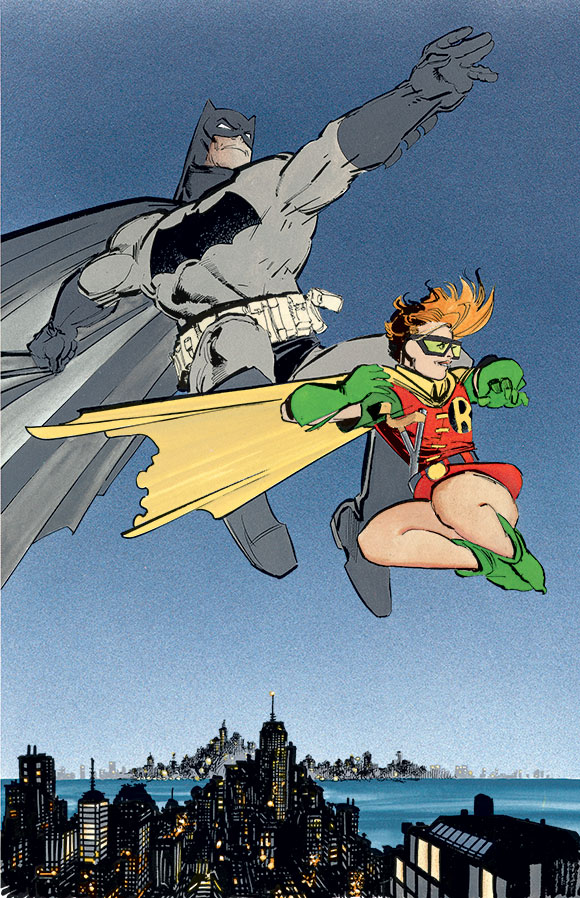
1980s
Detective Comics #526 in 1981 saw the introduction of an orphan named Jason Todd. One year later, in Batman #368, Dick Grayson retired as Robin, and Jason Todd adopted the name.
In 1986, the four-issue series Batman: The Dark Knight, by Frank Miller and Klaus Janson, redefined the hero as an older, tougher warrior coming out of retirement to reclaim Gotham City from criminals who had overtaken it. It also introduced the first female Robin. As Batman: The Dark Knight Returns, it became the first DC story arc to be collected in book form and has remained continuously in print.
Also in 1986, Frank Miller and artist David Mazzucchelli collaborated to update Batman’s origin story in Batman #404–407. The book collecting those stories, Batman: Year One, was another best-selling title.
Tragedy and death touched Batman in 1988. Alan Moore and Brian Bolland’s Batman: The Killing Joke was a nightmarish story about the Joker shooting Barbara Gordon and leaving her for dead. That same year, DC allowed readers to vote on the fate of Jason Todd, the second Robin. The readers voted “thumbs-down,” and as a result Todd lost his life in an explosion caused by the Joker.
Batmania hit the public again when Tim Burton’s Batman movie premiered in 1989 with Michael Keaton in the title role and Jack Nicholson as the Joker.
In the comics, Batman began exhibiting an excessive, reckless approach fighting crime, a result of the pain of losing Jason Todd. Batman worked solo until the decade's close, when Tim Drake became the third Robin.
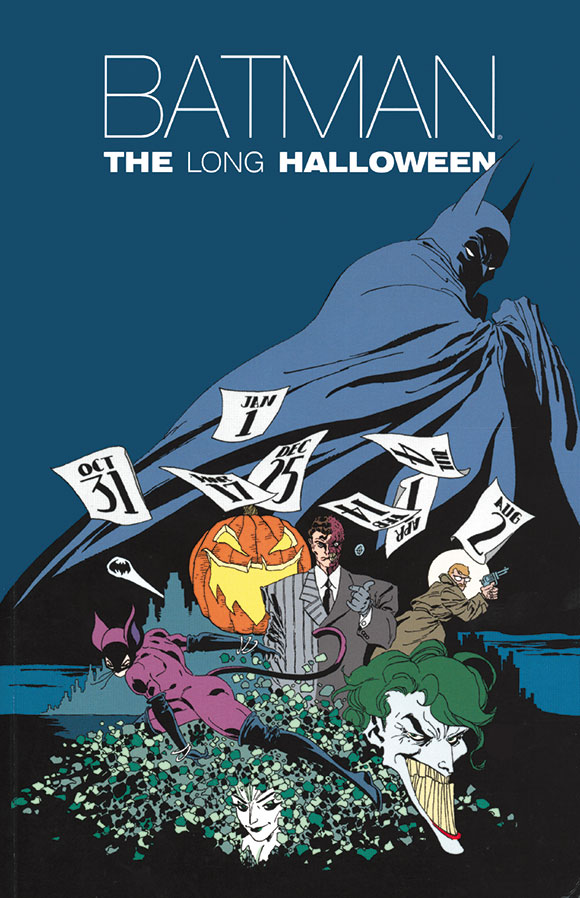
1990s
In 1992, Batman Returns featured the return of Michael Keaton as the Dark Knight, facing off against Danny DeVito and Michelle Pfeiffer as the Penguin and Catwoman. That same year, Batman: The Animated Series made it debut on TV. A critical and popular success, the series continued under a variety of names for most of the decade.
In 1993, DC published the “Knightfall” storyline, which culminated when the ruthless villain Bane broke Batman’s back. An anti-hero named Azrael became the new Batman, and Catwoman and Robin got ongoing comic book series of their own.
Batman and Gotham City faced catastrophe in the decade's closing crossover arcs. In the “Cataclysm” storyline, Gotham City was devastated by an earthquake and cut off from the United States Government. Deprived of many of his technological resources, Batman fought to reclaim the city from gangs of criminals during the 1999 “No Man's Land” storyline.
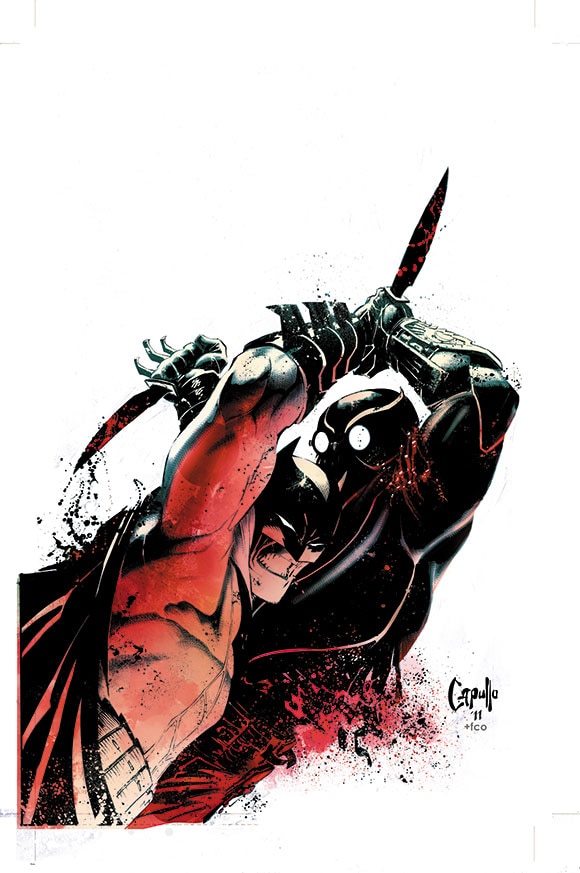
2000s
The 12-part “Hush” story in 2003 by writer Jeph Loeb and artist Jim Lee brought new energy and a huge audience to the Batman title. The story featured an array of the Dark Knight’s worst foes and introduced the bandaged Hush, revealed to be a figure from Bruce Wayne’s childhood.
In 2005, Christian Bale starred in Batman Begins, a film directed by Christopher Nolan. The film explored the origins of the Dark Knight and his emergence as a force for good in Gotham City. The 2008 follow-up, The Dark Knight, featured an Oscar-winning performance by Heath Ledger and became one of the highest-grossing movies of all time.
From the 1980s onward, DC published special crossover events that often had “crisis” in the title. The 2008-2009 crossover Final Crisis shocked readers by offering up what appeared to be the death of Batman after he fought the godlike villain Darkseid. With Bruce Wayne presumed dead, Dick Grayson became the new Batman.
In 2009, the Batman: Arkham Asylum video game became one of the best-selling and best-reviewed console games of all time.
In 2010, it was revealed that Darkseid had not killed Batman; instead, Bruce Wayne had become lost in time. Although Wayne eventually returned to the present day and reclaimed the mantle of Batman, he also allowed Dick Grayson to continue being Batman as well.
DC Comics hit the “reset” button in 2011 on Batman, Detective Comics and all the super-hero titles, starting them over as #1 issues in the company’s “New 52” relaunch.
In 2014, writer Scott Synder and artist Greg Capullo updated Batman’s origin story for the first time in 25 years in the new Batman: Zero Year storyline.
Oh, and remember that comic, Detective Comics #27? The one that introduced Batman to the world and kickstarted 75 years of amazing comic book, movie, TV and video game adventures? A copy of it sold for $1.07 million in 2012.
If you’re a Batman fan, you’re in for a good week. This week, hundreds of comic shops, bookstores and libraries will celebrate “Batman Day,” a celebration of all things Dark Knight.
Then if you’re going to Comic-Con, you can look forward to not one, not two, but three special Batman 75th Anniversary panels.
Join Frank Miller, Jim Lee, Scott Snyder, Greg Capullo, Geoff Johns, Grant Morrison, Denny O’Neill and Neal Adams in an in-depth discussion of the Dark Knight’s life on the comic page in Batman 75: Legends of the Dark Knight, taking place on Thursday, July 24 from 3:30-4:30 pm in Room 6BCF.
Saturday morning, your Bat-knowledge will get put to the test in the ultimate Batman trivia contest: Batman 75: Riddle Me This!, taking place on July 26 from 10-11 am in Room 6DE. Oh, and did we mention prizes are on the line?
Finally, don’t miss the once-in-a-lifetime chance to witness Jim Lee, Geoff Johns, Ralph Garman, Kevin Conroy, Paul Dini and Senior Vice President, Creative Affairs, Warner Bros Animation Peter Girardi all together on stage to discuss the Dark Knight’s legacy in pop culture in Batman 75th Anniversary, happening on Saturday, July 26 from 4-5 pm in Room 6BCF.
And that’s just the start! Click here for even more Batman events taking place at Comic-Con.




















